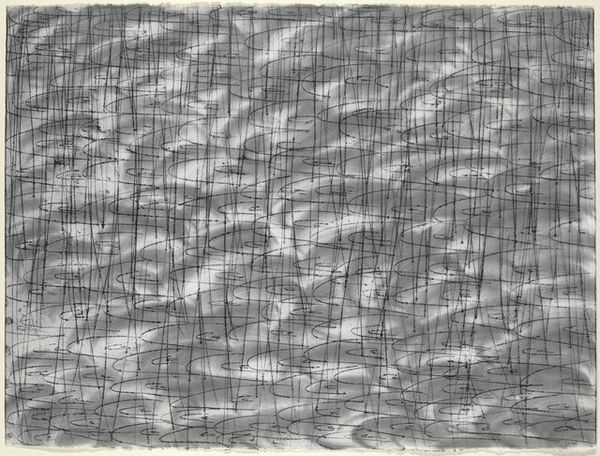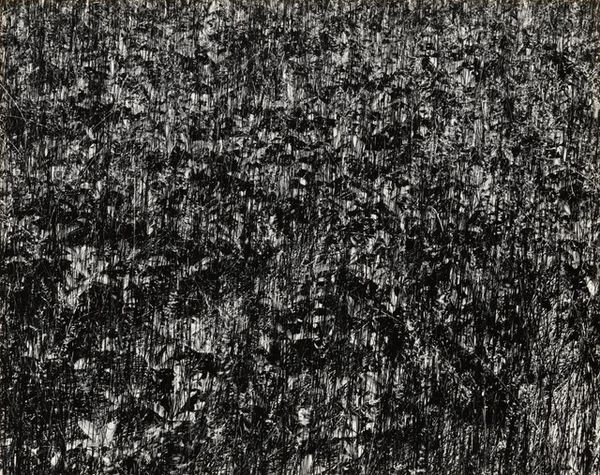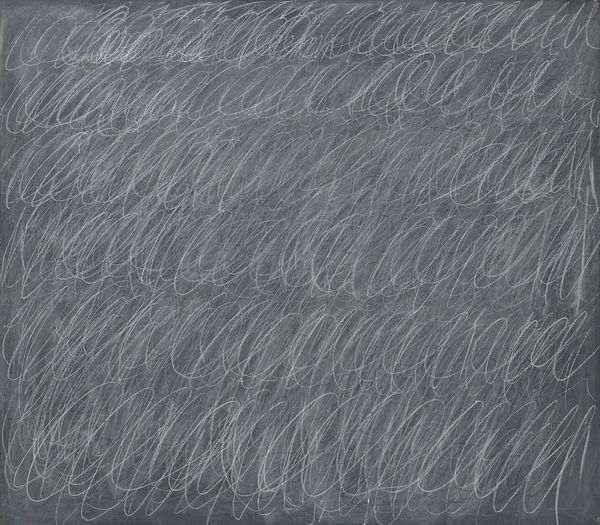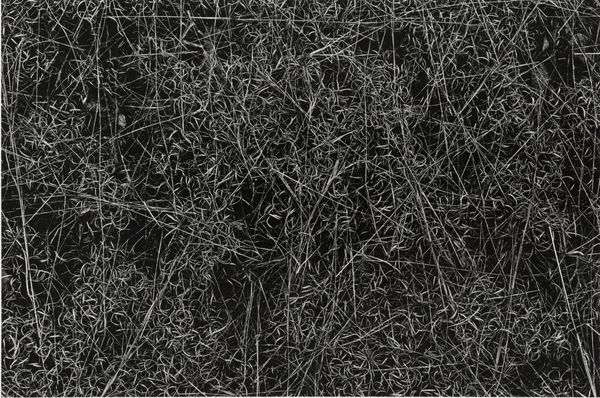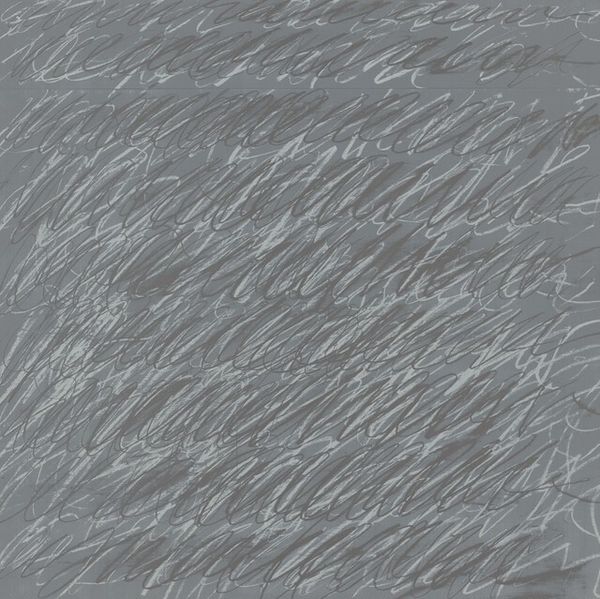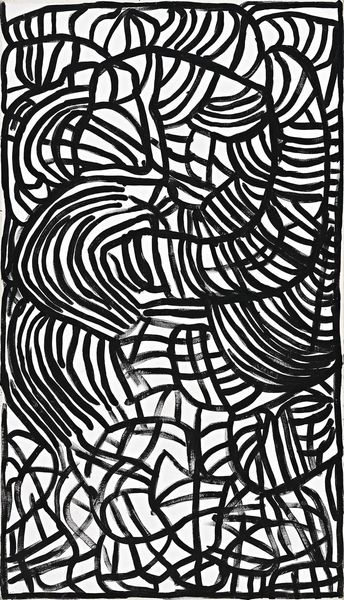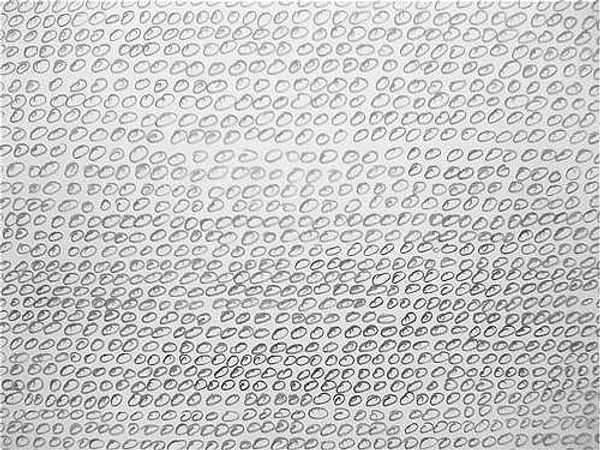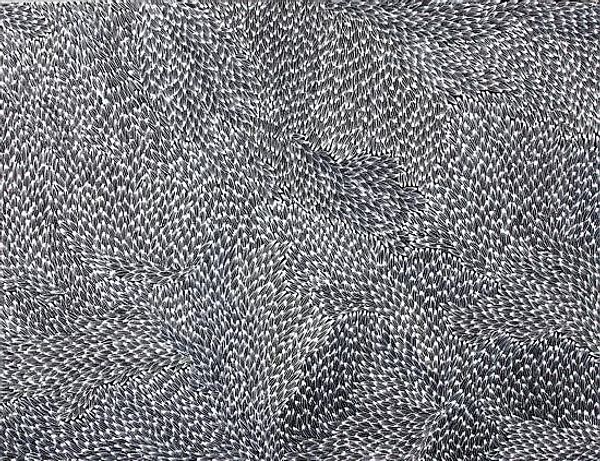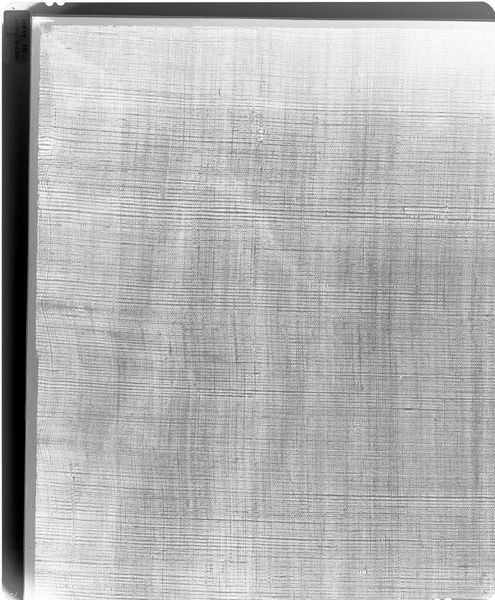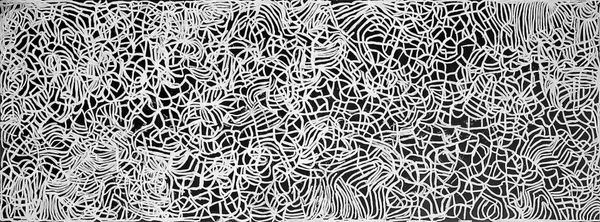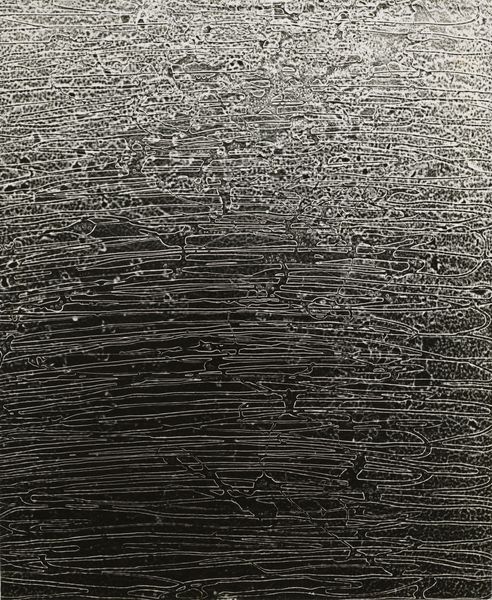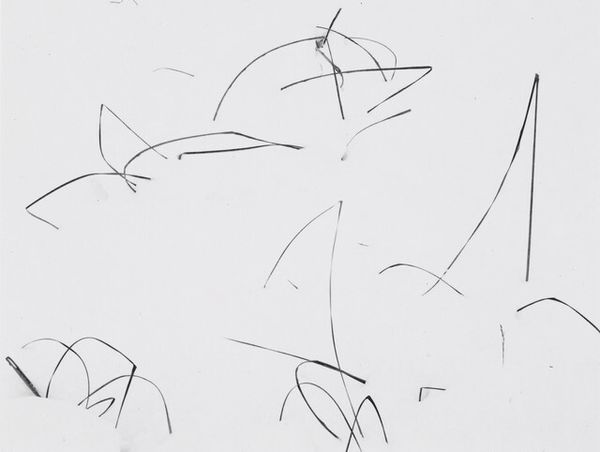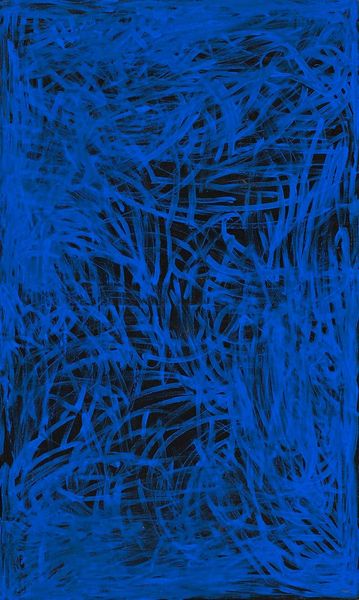
drawing, graphite
#
abstract-expressionism
#
drawing
#
organic
#
pattern
#
text art
#
organic pattern
#
black-mountain-college
#
abstraction
#
line
#
graphite
Copyright: Cy Twombly,Fair Use
Editor: Here we have Cy Twombly's "Cold Stream" from 1966, rendered with graphite on paper. It looks like a series of chaotic scribbles at first glance, yet there is clearly an underlying pattern. How do you interpret this work? Curator: I see "Cold Stream" as a profound engagement with power structures disguised as gesture. Look at the repetitive, almost obsessive loops. What do you think they signify within the socio-political context of the mid-60s? Editor: Maybe it represents the feeling of being trapped in cycles, societal norms, or political unrest? The Vietnam war was escalating. Curator: Exactly. Twombly, although abstract, refuses to exist in a vacuum. The perceived "scribbles" challenge traditional notions of skill and beauty, subtly questioning established hierarchies within the art world itself. Can we consider this as a rebellion against the expectation of artistic 'perfection' a predominantly white, male ideal? Editor: I never thought about it that way, it seemed chaotic and not planned, which is often linked to female artists rather than male. But now I can see how Twombly breaks these conventional expectations by challenging the traditional understanding of value within the artistic practices and what makes art worth seeing and commenting on. Curator: Absolutely! And by using the seemingly simple act of drawing, and then naming it “Cold Stream”, he implicates an element, or environmental issue as a reflection on society. What appears effortless is a calculated intervention. Editor: Wow, that changes my understanding completely. It shows how art can reflect bigger issues without being obvious. Curator: Precisely. Twombly pushes us to confront underlying social and political dynamics, all while seemingly just making "scribbles."
Comments
No comments
Be the first to comment and join the conversation on the ultimate creative platform.
